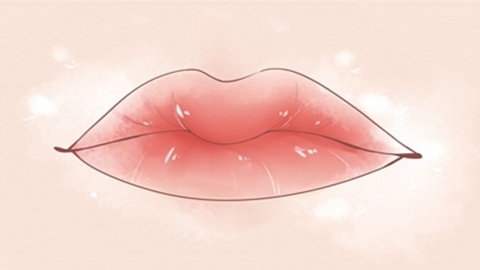What causes the lower lip to turn purple?
Under normal circumstances, purple lower lips may be caused by cold stimulation, excessive exercise, pneumonia, chronic obstructive pulmonary disease, atrial septal defect, and other reasons. It is recommended to seek medical attention promptly and undergo treatment under a doctor's guidance. Detailed explanations are as follows:

1. Cold Stimulation
When the body is in a cold environment, it maintains core body temperature by constricting peripheral blood vessels through neural regulation, thus reducing heat loss. The blood vessels in the lips also constrict, slowing blood circulation and relatively decreasing the oxygen content in the blood, resulting in a purple appearance of the lower lip. It is recommended to keep warm in cold weather, add clothing promptly, wear scarves, masks, and avoid prolonged exposure to cold environments.
2. Excessive Exercise
After intense exercise, the body's oxygen demand increases, and the heart pumps blood faster. However, when the exercise intensity is too high or lasts too long, the heart and lung functions may not meet the body's oxygen demand in time, causing temporary hypoxia in the body, which leads to a purple coloration of the lower lip. In daily life, one should reasonably plan exercise intensity and duration, warm up sufficiently before exercising, rest appropriately during exercise, and avoid excessive fatigue.
3. Pneumonia
Pneumonia is often caused by pathogens such as bacteria, viruses, and mycoplasma infecting the lungs. Lung inflammation damages lung tissue, reduces the gas exchange area, causes insufficient oxygen intake, lowers blood oxygen levels, and consequently causes the lower lip to turn purple. Patients may also experience symptoms such as fever, cough, and sputum production. Patients should follow medical advice to use anti-infective medications such as Ceftriaxone Sodium for injection, Amoxicillin capsules, and Azithromycin dispersible tablets for treatment.
4. Chronic Obstructive Pulmonary Disease
Chronic obstructive pulmonary disease is usually caused by long-term smoking, air pollution, occupational dust exposure, and other factors. Patients develop chronic inflammation in the airways, leading to airflow limitation and impaired gas exchange. Oxygen cannot adequately enter the bloodstream, carbon dioxide removal is inefficient, causing hypoxia in the body, thereby causing the lower lip to turn purple. Patients may also experience symptoms such as chronic cough, sputum production, and shortness of breath. Under a doctor's recommendation, patients can use medications such as Budesonide suspension for inhalation, Salbutamol sulfate aerosol, and Ipratropium bromide aerosol to alleviate airway inflammation and dilate the bronchi.
5. Atrial Septal Defect
Atrial septal defect is caused by structural abnormalities in the heart, resulting in blood shunting within the heart and mixing of arterial and venous blood, which reduces the oxygen content in arterial blood and causes the aforementioned symptoms. Patients may also experience symptoms such as delayed growth and development, easy fatigue, and reduced exercise tolerance. Under a doctor's guidance, patients can undergo atrial septal defect repair surgery, during which a patch is sewn into the defective area of the atrial septum, creating an artificial atrial septum to block the abnormal blood flow between the left and right atria, achieving a curative effect.
In daily life, it is important to maintain a balanced diet and avoid consuming spoiled food; strengthen exercise to enhance cardiopulmonary function; and undergo regular physical examinations for early disease detection and timely intervention.









